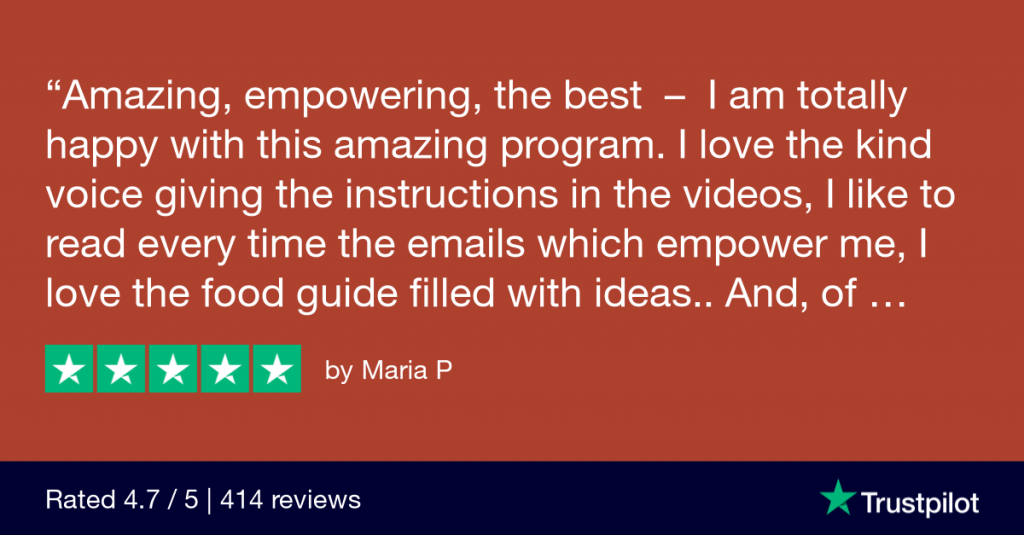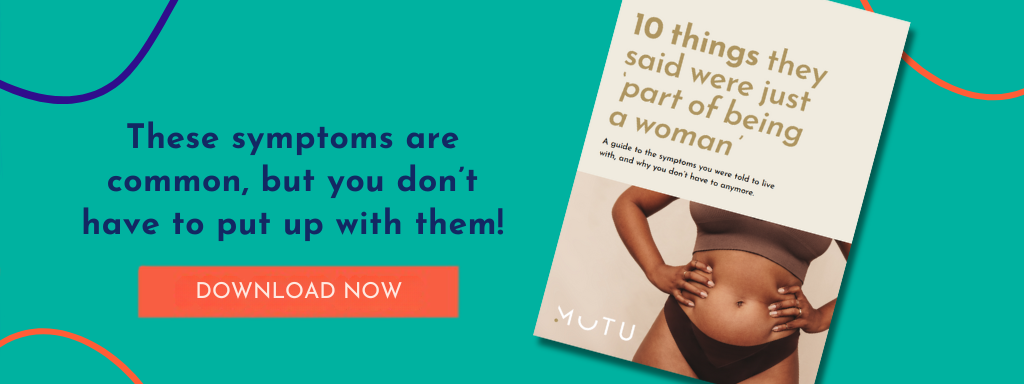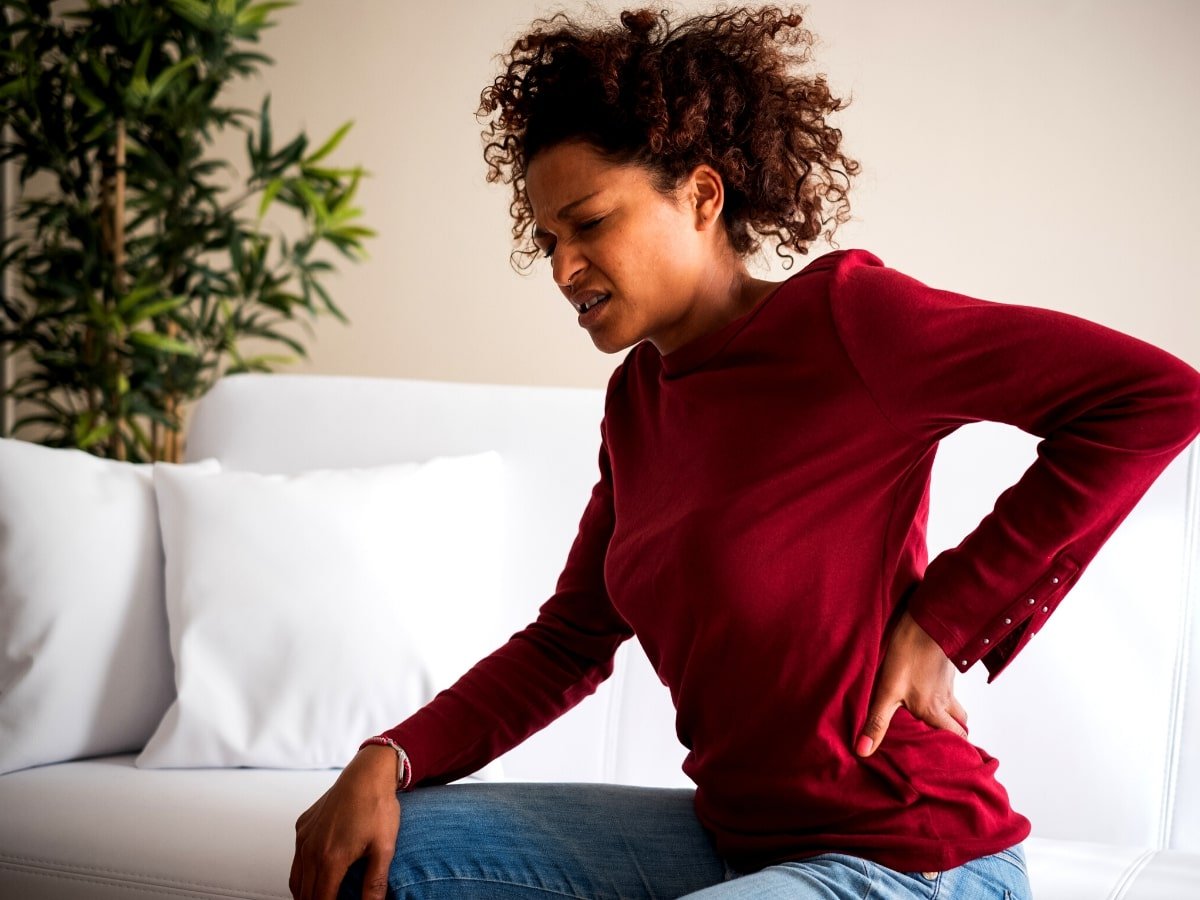Our latest article looks at the link between diastasis recti and postpartum back pain. We’ll be diving into some of the most common question that we get here at MUTU system from mums experiencing discomfort postpartum, including how abdominal separation can affect the back and what to do about it.
We’ll look at the following:
- Can my postpartum back pain be from diastasis recti or a pelvic floor problem?
- How diastasis recti and pelvic floor problems can contribute to postpartum back pain
- How gut and bladder health are linked to diastasis recti and back pain
- How to centre your core health and alignment to improve diastasis recti back pain
- Remaining positive on your journey to recover from postpartum back pain
So, let’s get started…
Can my postpartum back pain be from diastasis recti or a pelvic floor problem?
We tend to talk about our bodies as a stack of isolated parts rather than systems and structures making up one collective whole. When trying to figure out what can be causing post-birth back pain — and of course, how to fix it — it’s better to look at the body holistically.
This means looking into your issue possibly stemming from overall core issues, needing more rest or more movement, focusing on nutrition as well as breathing and exercises, paying attention to your alignment while walking or feeding baby, and so on. Mental health in postpartum and postpartum depression are also often overlooked as causes.
In fact, one of the main symptoms of diastasis recti and pelvic floor weakness/tightness is lower back pain! It’s all often related.
Does diastasis recti make your back hurt?
Yes, diastasis recti can contribute to back pain (but not always). Diastasis recti is a condition in which the two sides of the rectus abdominis muscle (your ab muscles!) separate. When your abdominal muscles separate, it can weaken your core, leading to instability and poor support for the spine. This lack of core stability can put additional strain on your back muscles, causing discomfort or pain. Additionally, the altered abdominal mechanics resulting from diastasis recti can affect posture and spinal alignment, further exacerbating back pain.
Do pelvic floor problems contribute to postpartum back pain?
Pelvic floor problems postpartum can also cause low back pain, since the muscles in your pelvic floor are connected to the muscles in your back. It’s a very intricate system down there! When these muscles are weakened or not functioning properly, it can cause additional strain and physical discomfort.
Healing diastasis recti back pain symptoms

Listen to your gut : How gut and bladder health are linked to diastasis recti and back pain
Diastasis recti, pelvic floor health, and postpartum back pain have a surprising connection to your gut and bladder health.
Straining to poo or on the flip side experiencing incontinence can worsen back problems after birth. Good nutrition, staying hydrated, exercise, and stress-management can all help deal with each of these issues together.
Try not to hold in your pee or poo, eat healthy foods which support easy digestion, and keep in mind how stress can negatively affect your gut.
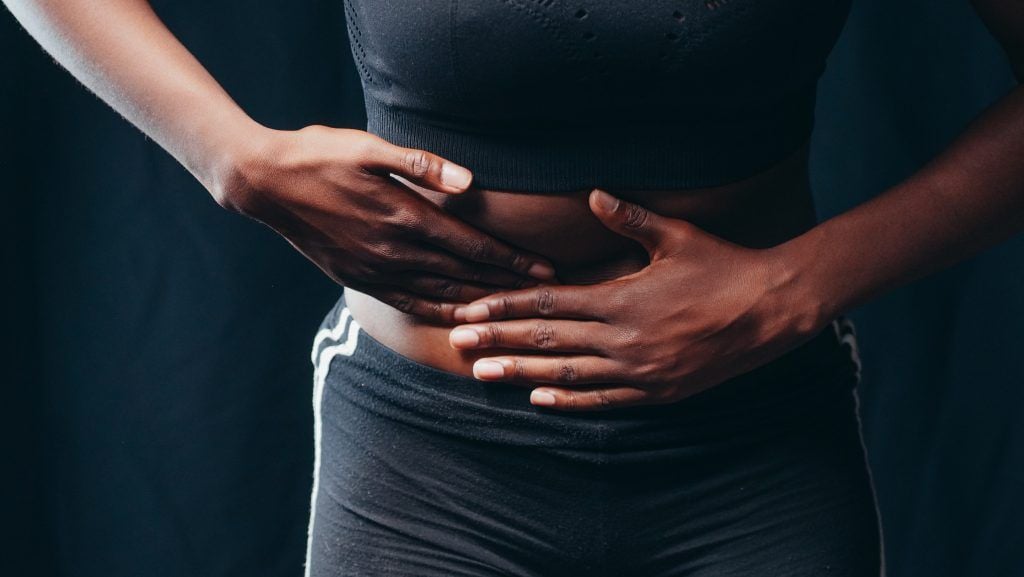
How to centre your core health to improve diastasis recti back pain
At the end of the day, it all comes down to returning yourself to centre. That can sound pretty woo-woo and cheesy, but it really is the ticket to more relief.
Core strength, mobility, and function helps our whole body work optimally. Think of how much you used your centre in pregnancy. And how much it played a role in birthing your baby. Now picture all the ways you engage your core each day in caring for yourself and baby, too. When we have issues with our pelvic floors or experience diastasis recti, using our core properly can be incredibly difficult.
You can start to return to a healthy and activated core with breath work and pelvic floor engagement exercises. These are gentle enough to start as soon as you feel ready and are safe exercises for mums who have had caesarean births.
Next, body alignment postpartum is key. Good posture is important for healing diastasis recti, pelvic floor issues, and postpartum back issues. Crunching away isn’t helpful if your spine is all out of whack! Working out with poor alignment is actually more likely to cause further damage than set you on a path towards healing.
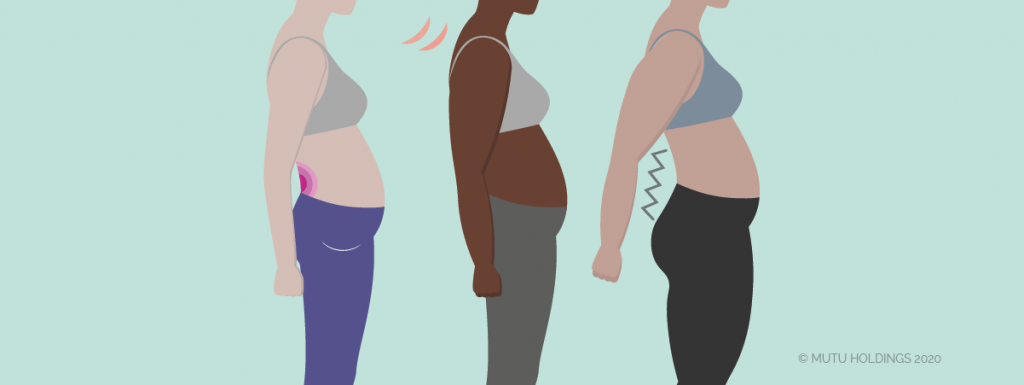
What are the best exercises for diastasis recti back pain?
An effective and tailored diastasis recti exercise program is one of the best treatment options. It can help you regain strength, reduce discomfort and heal symptoms of diastasis in the months (and even years) postpartum. By focusing on your pelvis, deep core muscles and mobility you can steadily help your whole body back to optimal performance. But for many mums its confusing to know which exercises to do and which to avoid. Should we do sit-ups or crunches? Are planks allowed? Are there any daily activities I should avoid? We hear you.
To help get you started we’ve written up some of our favourite diastasis recti exercises and some excellent postpartum back pain exercises to help you get started.
The MUTU system programme is designed specifically for busy mums with a tailored programme and support content to take you through this journey, we offer a ten day free trial with no obligation to continue so why not check it out today.

No shame in your pain: Stay positive on your journey to recover from diastasis recti back pain
Remember, back pain post-birth (especially in the months postpartum) is really common and stems from a lot of possibilities. You don’t have to hunt for the primary reason in order to start healing. You definitely don’t have to look at the possible causes with judgement.
No matter how you gave birth, if you have been an A+ “healthy” eater all the time, can’t seem to get a nap in every day, blah blah blah. Try a few MUTU tips towards resolving your discomfort gently and in your own time. Listen to your body and don’t be afraid to ask for help if you feel stuck or frustrated.
Want a supportive community and evidence-based guidance around healing postpartum? Join our MUTU Mamas community!
